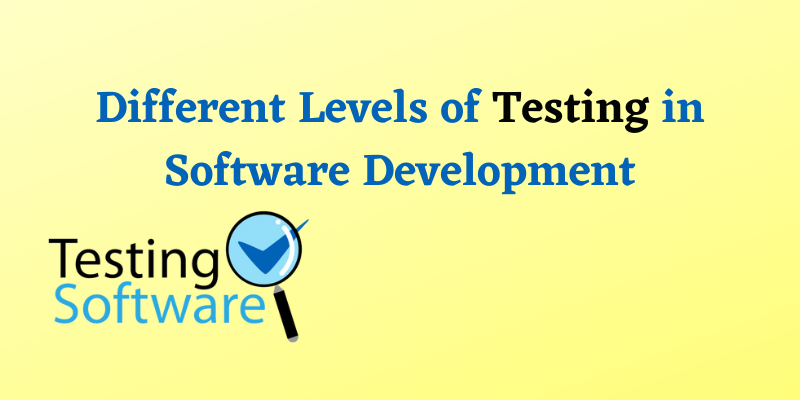Software testing is the process of identifying and verifying a software product or an application. The main benefits of testing include preventing bugs, which helps reduce development costs and improve performance. If you want more information and practical knowledge about Different levels of Testing in Software Development levels, Join the best Software Testing Course In Chennai at FITA Academy with course certification and placement training, which will help enhance your career.
Different Levels of Testing in Software Development:
There are four levels of Testing in Software Development. Each level has their own Functionality. The Functionality of the four levels of Software Testing is mentioned Below:
- Unit Testing
- Integration Testing
- System Testing
- Acceptance Testing
Unit Testing:
Unit Testing is generally done to check whether the individual module of the source code works properly without any error. It means testing every unit module of an application by the developer in the developer’s environment. It is also known as Component Testing. To learn more about Unit Testing, Enroll Software Testing Online Course where you can learn the basic to advanced concepts of Software Testing.
Integration Testing:
Integration Testing processes the testing of the connectivity or data transfer between a couple of unit-tested modules. It is also known as AKA I & T Testing or String Testing. It is subdivided into categories such as Top-Down Approach, Bottom-Up Approach, and Sandwich Approach (Generally a Combination of both Top-Down and Bottom-Up Approach).
System Testing:
System Testing is a Black box testing known as End to End Testing. Testing is a fully integrated application which is called end-to-end scenario testing. Ensure that the software works in the intended target systems, must verify thorough testing of every input in the software applications to check for desired outputs.
Acceptance Testing:
Acceptance Testing is also called pre-production testing. It is usually done after the system testing, which is the final phase of the Software Testing process. Generally, companies hand over the application to the desired customer to perform the acceptance tests only if the system testing is entirely over and it’s signed off. To obtain a customer sign-off so that the software should be delivered and payment must be received. Some of the various types of Acceptance testing are Alpha, Beta and Gamma Testing.
Conclusion:
This blog has discussed Different Levels of Testing in Software Development. To learn more about Software testing and its level, join the Software Testing Course in Bangalore, where our expert trainers will assist you with real-time examples and case studies.

